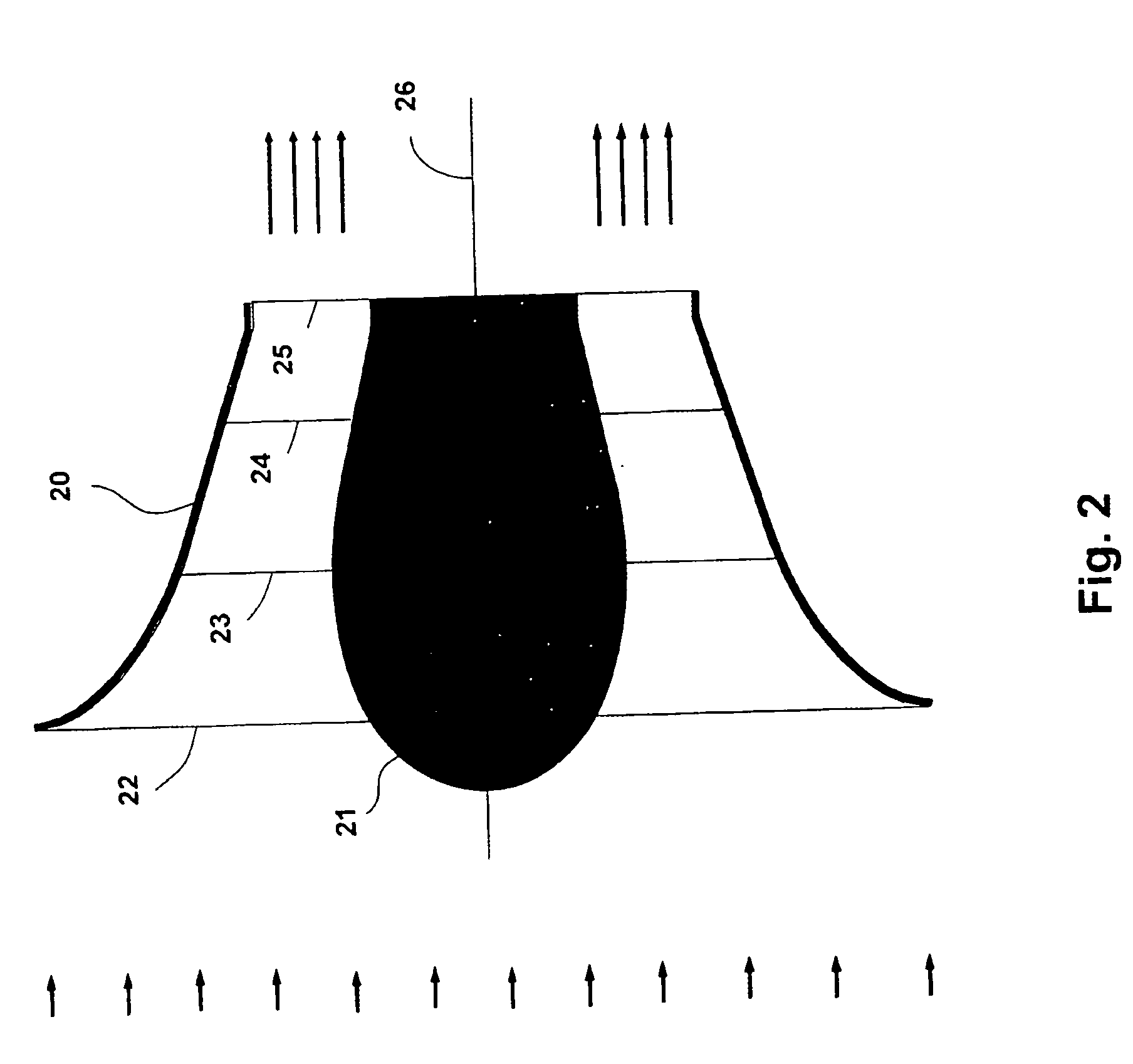Method for cleaning a stationary gas turbine unit during operation
a gas turbine unit and cleaning technology, applied in the direction of cleaning process and apparatus, electrostatic cleaning, hollow article cleaning, etc., can solve the problems of gas turbines consuming large quantities of air, deteriorating aerodynamic properties, and pressure step-up losses, so as to increase the roughness of the surface, and reduce the effect of pressure step-up losses
- Summary
- Abstract
- Description
- Claims
- Application Information
AI Technical Summary
Benefits of technology
Problems solved by technology
Method used
Image
Examples
Embodiment Construction
[0019] Air drawn into the compressor is accelerated to high speeds in the air duct prior to compression. FIG. 1 shows the design of an air duct for a gas turbine. The direction of flow is indicated by arrows. The surrounding air A is assumed to have no initial velocity. After having passed weather protection 11, filter 12 and dirt trap 13 the air velocity at B is 10 m / s. The air velocity increases further at C to 40 m / s as a result of the decreasing cross sectional area of the air duct. Immediately prior to the first blade E of the compressor the air passes a duct especially designed to accelerate the air to extremely high speeds. Between its inlet C and its outlet E the acceleration duct 15 is called the “bell mouth”15. The purpose of the bell mouth is to accelerate the air to the speed required for the compressor to perform its compression work. The bell mouth 15 is connected to the duct 19 by the joint 17. The bell mouth 15 is connected to the compressor 16 by the joint 18.
[0020...
PUM
 Login to View More
Login to View More Abstract
Description
Claims
Application Information
 Login to View More
Login to View More - R&D
- Intellectual Property
- Life Sciences
- Materials
- Tech Scout
- Unparalleled Data Quality
- Higher Quality Content
- 60% Fewer Hallucinations
Browse by: Latest US Patents, China's latest patents, Technical Efficacy Thesaurus, Application Domain, Technology Topic, Popular Technical Reports.
© 2025 PatSnap. All rights reserved.Legal|Privacy policy|Modern Slavery Act Transparency Statement|Sitemap|About US| Contact US: help@patsnap.com



